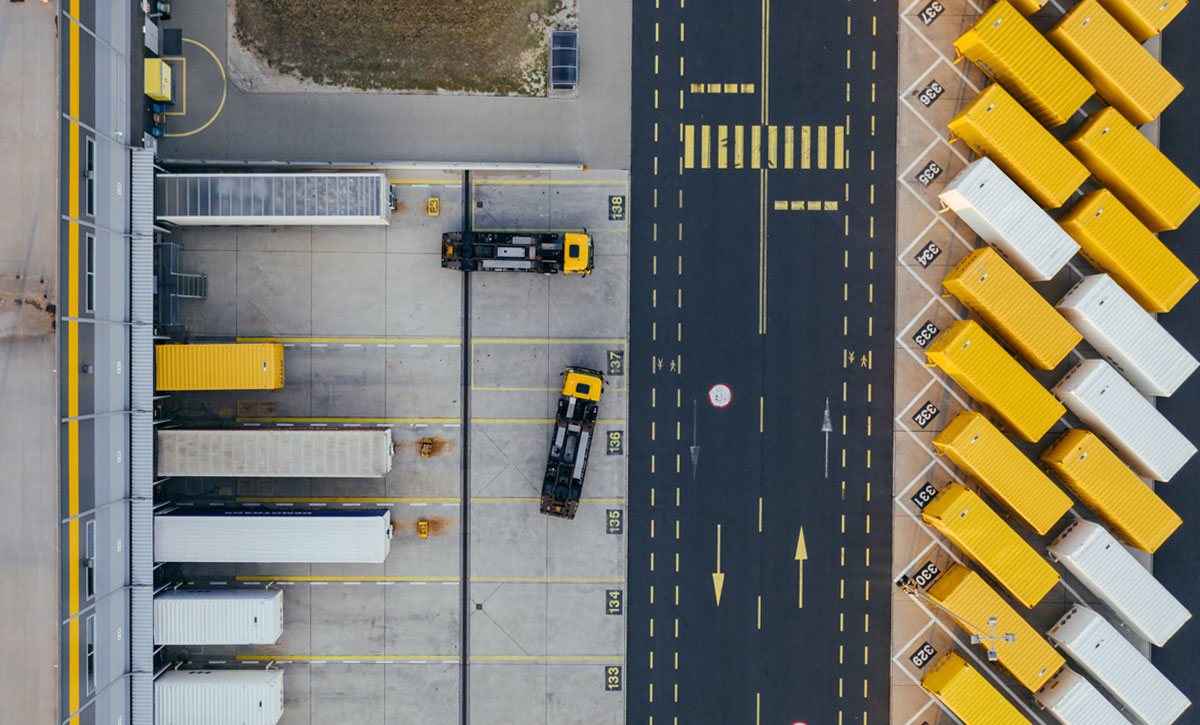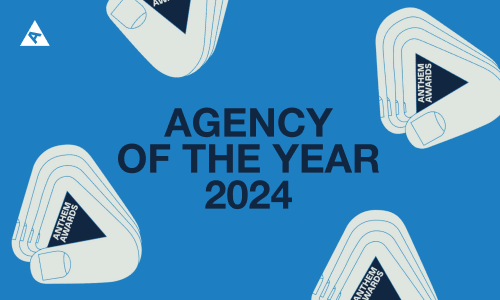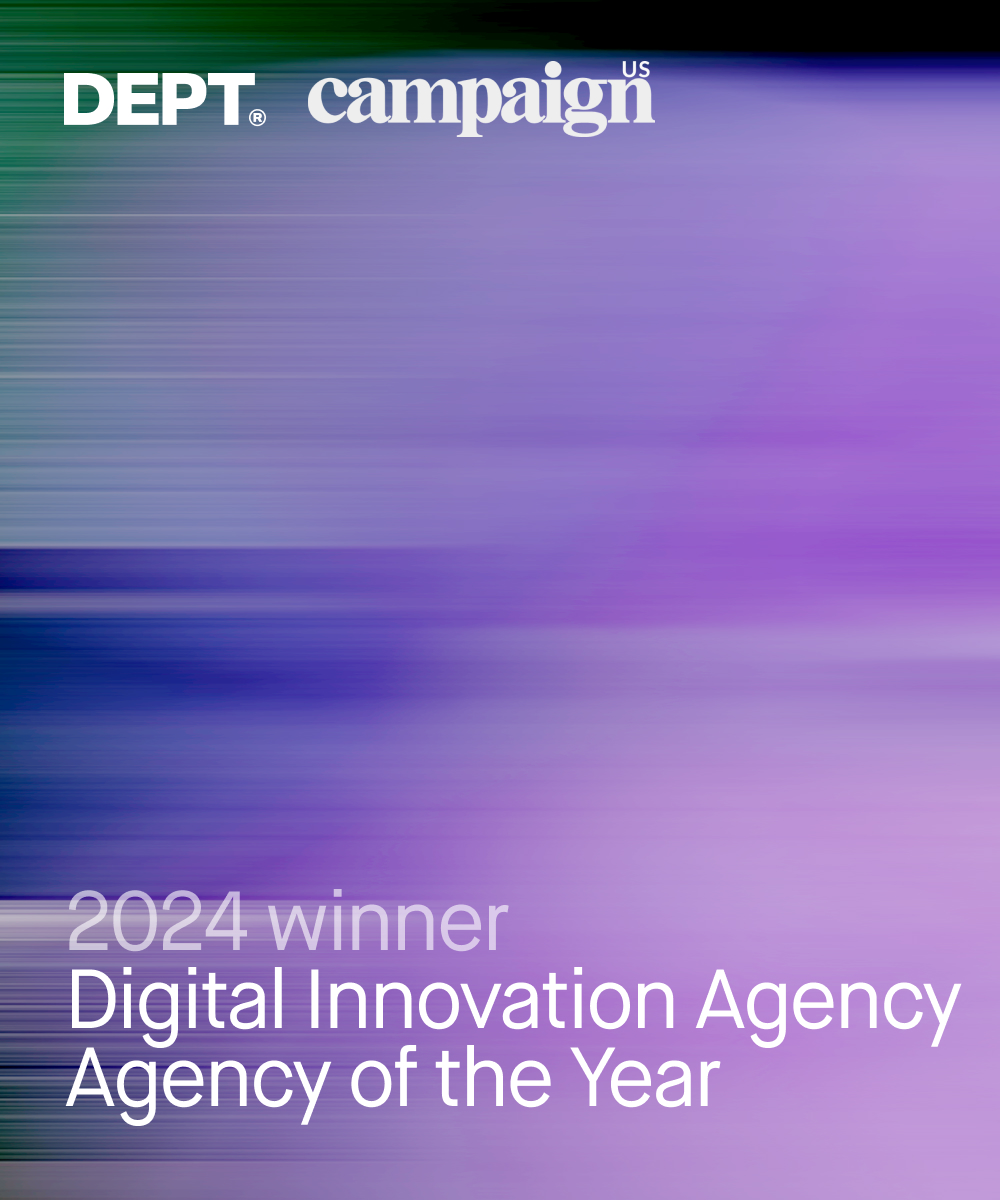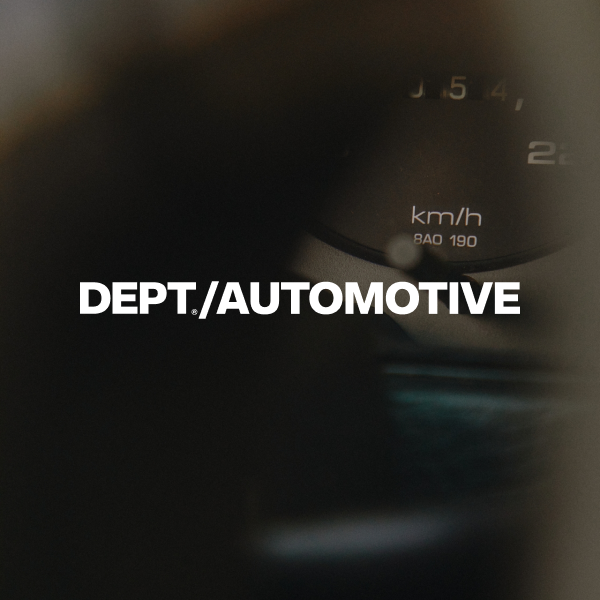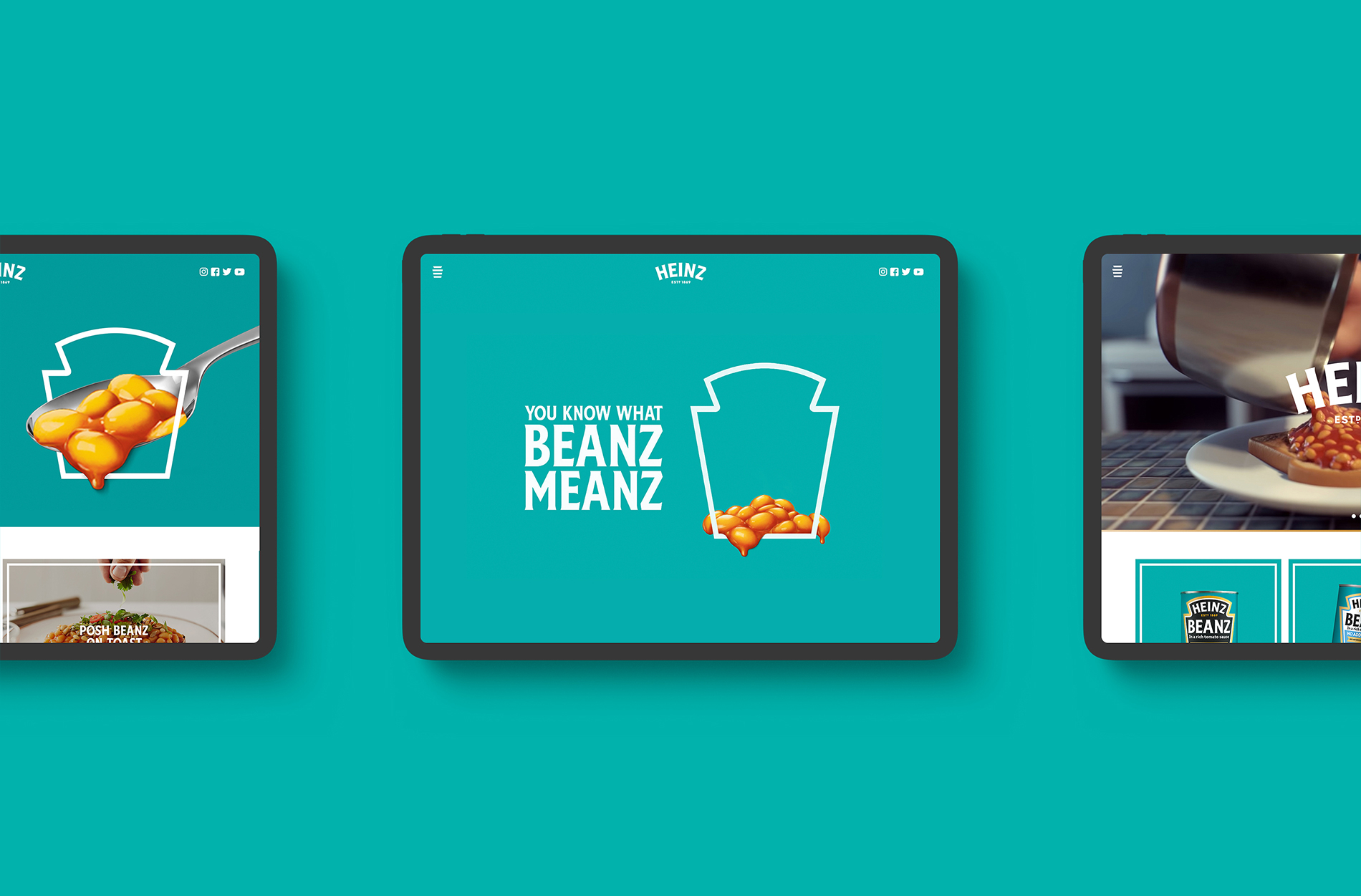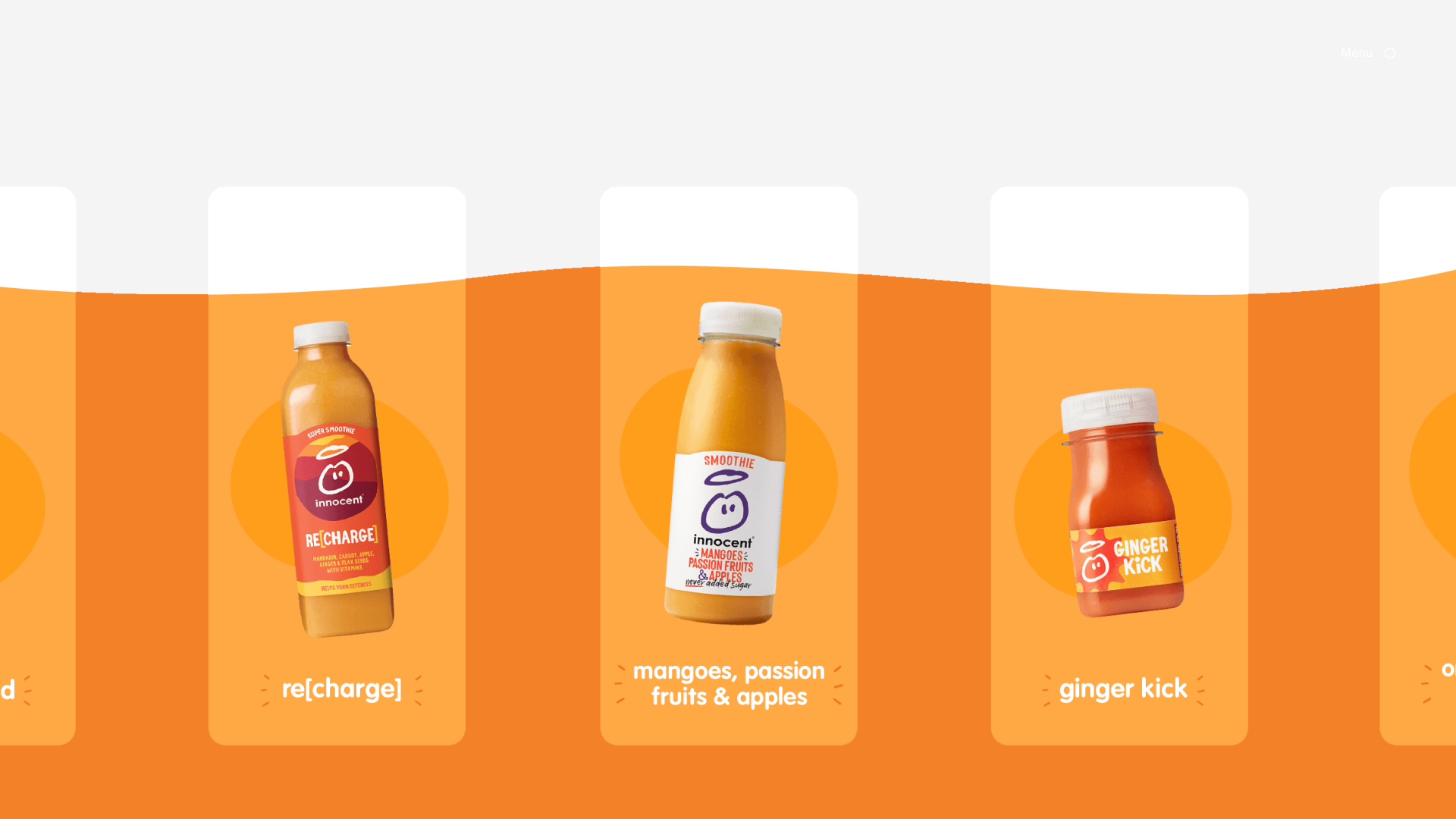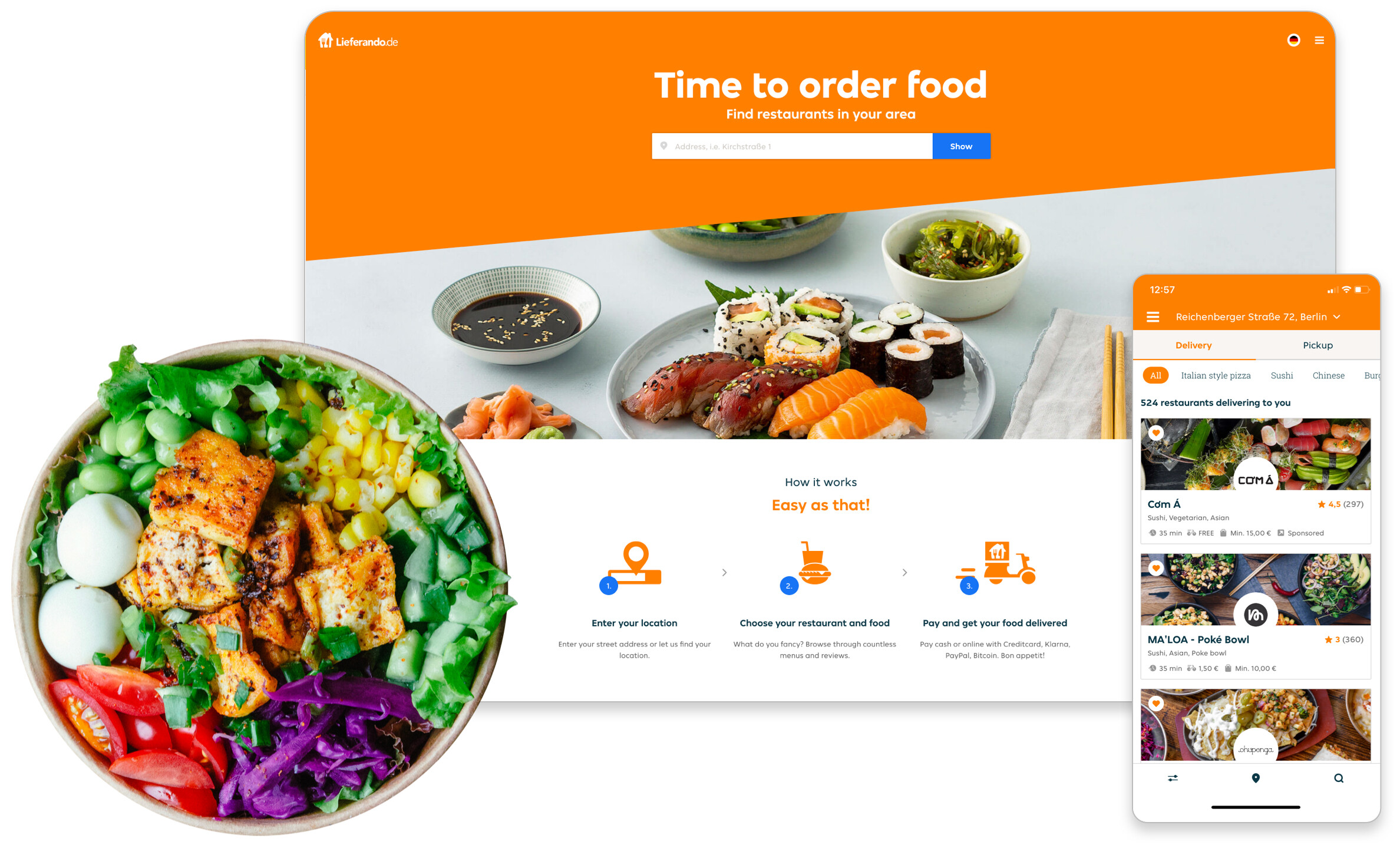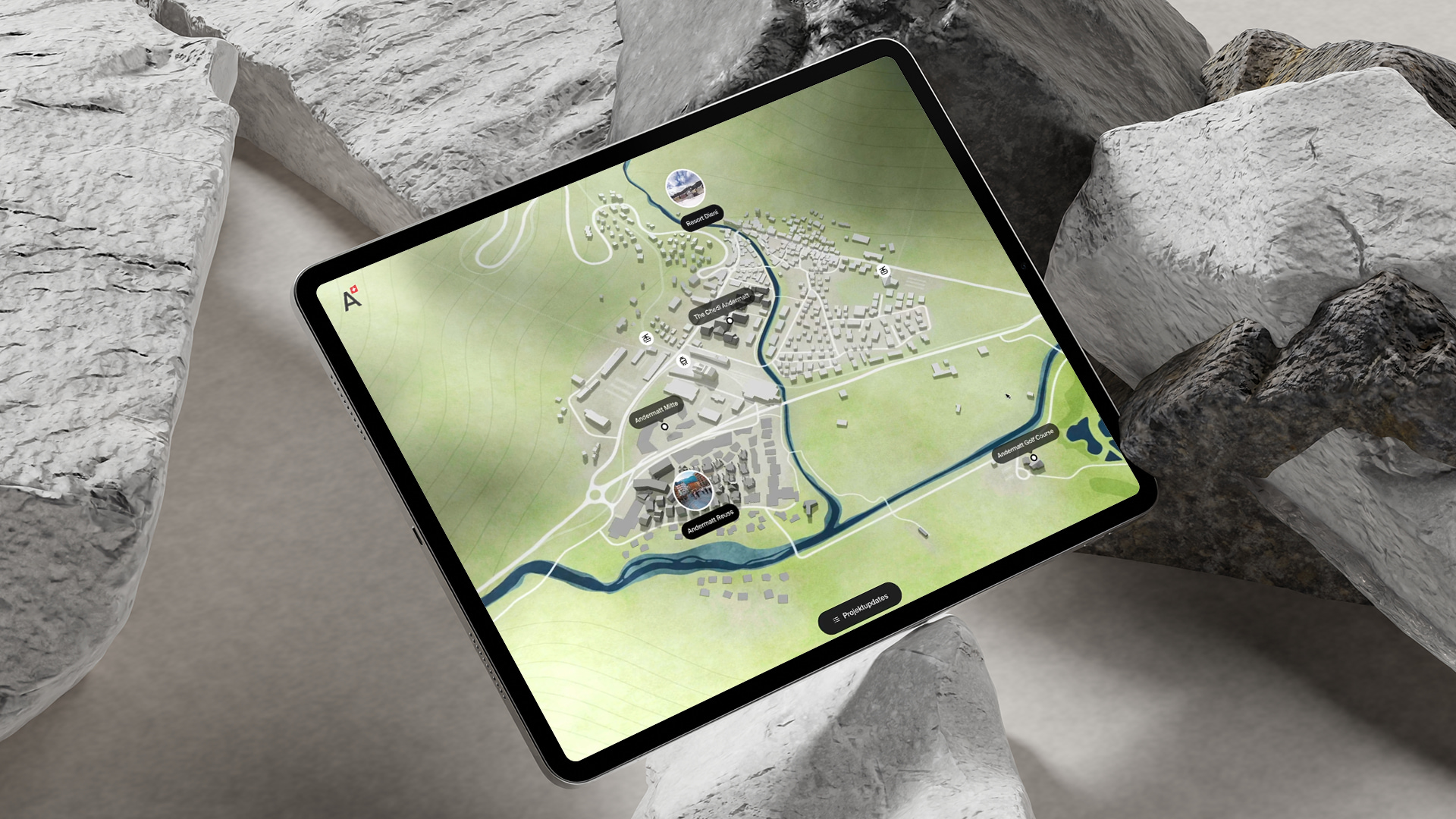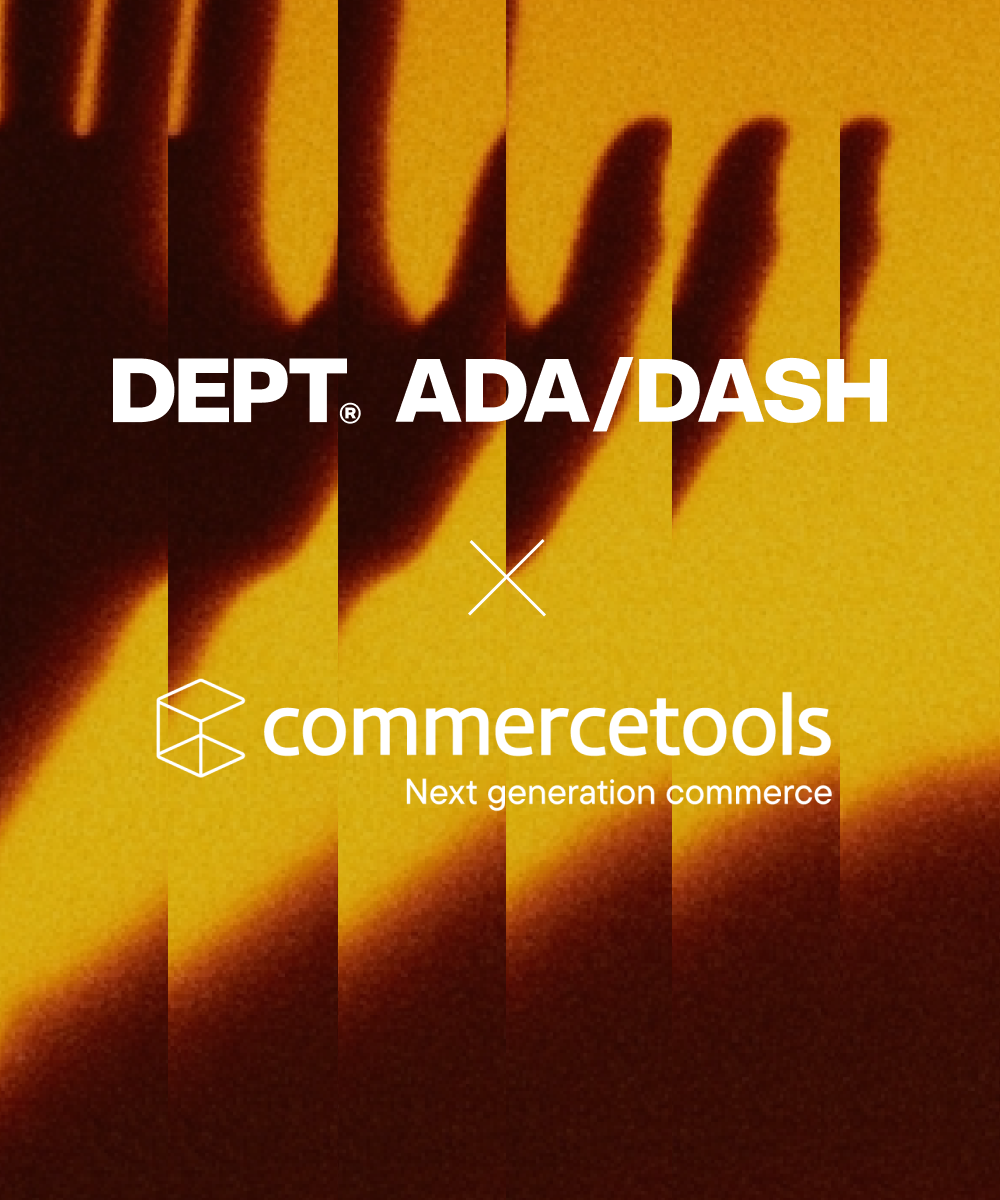There is a tendency in the B2B e-commerce sector to look across to the top B2C brands and play down the applicability of the features and techniques that make their sites market leaders. The idea that stylish sites and flashy features only fit the B2C model, while B2B should focus on the bread and butter options to fit the typically measured and professional tone of voice that many B2B brands use. This is misplaced thinking, based on the division of B2B and B2C. In reality, there are businesses, there are customers, and there is e-commerce. Shopper psychology spans across each; the features that allow B2C brands to excel in the online space are there because they work. Chiefly, personalisation.
Personalisation has always played a role in commerce. In the past, personalisation existed in retail as an in-store assistant, and in industry as a sales rep that would build a relationship with the customer over time, learning their needs, their pain points and how they liked to conduct their business. These approaches have always led to a much improved buying experience; faster, easier and more accurate. But these relationships take time to build; it’s a long term process of listening, learning and responding. And while human-to-human contact is still very much valued, digital technology, data tracking and analysis can bear the load. When implemented well, personalisation can speed up sales cycles and nurture prospects into loyal customers.
Advancements in digital technology have radically cut the time it takes to understand each individual customer and provide a personalised commerce experience. This technology is widely available, often built in to your content management system; all businesses now have the ability to implement personalisation strategies into their marketing and commerce efforts. This is good news, seeing as smart personalisation engines used to recognise customer intent can lead to an average profit increase of 15%. The flipside to this, is that personalisation has moved from an added benefit of certain businesses to an expected feature across every experience. 33% of consumers abandoned a business relationship last year because of a lack of personalisation. This is a necessity, not a nice to have feature.
Utilising account specific data
When starting to think about how your business can use personalisation in its commerce sales funnel, begin by thinking about how the company can collect data about customers and visitors. It’s important to begin with data capture, as the implementation of features depends on the type of data collected.
For specific customers, data primarily comes through the account creation process: job function; past purchases; which pages they have previously visited on the site; their dwell time; on-site search history, and so on. If the current data collection on account creation is limited, build this out for future customers and consider requesting current users to update their profile with more information upon their next login. Rather than hiding the motive, make it clear that the company will be using the data for an improved, personalised shopping experience. This clarity will boost the numbers opting in to data sharing, as it clearly offers a mutually beneficial exchange.
Putting this in place, electronics manufacturer Omron was able to create a site that adapts to the needs of each visitor. By using information on the job function of each logged in visitor, the Omron site could dynamically adapt and funnel distributors, systems integrators, Omron employees and end users to the appropriate pages. This is a simple solution, using just one piece of data to adapt the site, but it has a major impact, with the ability to scale up personalisation based on further gathered information.
Making use of digitally automatically collected data
Thinking about data capture also means thinking about the information that is automatically collected when a user visits the site, whether logged in or not. Their location data, the search term that brought them to the site, their onsite user journey – all of this information can inform your personalisation approach. Personalisation based on this information is subtle, possibly unnoticed as the visitor explores the website. They may not recognise the personalised experience, but will come away thinking that the shopping experience was quick and easy.
This also applies to classic customer segmentations, a general grouping based around shared behaviours. Personalisation doesn’t always mean single individuals. These segmentations can be useful when thinking about broader data automatically collected by new visitors to the site, as the depth of information isn’t there to create an individual response. As an example, an electronic parts company could use site search data to establish a segmentation that prominently displays associated purchases to visitors.
With an understanding of how data is collected, your business can begin planning the execution. At this stage, think in terms of what can be done onsite and off-site. While it is easier to control the onsite content and design, focusing solely on the website can see businesses missing out on the opportunity to fine tune their contact with customers through advertising and direct messaging.
Dynamic content
Onsite, dynamic content is a useful tool to make use of. This is content that adapts based on the data that is fed into the CMS, whether it is account data, previous purchases, search terms, and so on. The most obvious use is often found in the leisure and tourism space; if a visitor clicks on a number of pages relating to Italian destinations, the site can adapt the background images on more general pages to show Rome, Venice and Florence.
In the B2B space, dynamic content can be used to display relevant information, based on what is known of the customer. If they have listed their job function as logistics, they can be shown contextual information on delivery times and options, while a member of the finance team will see more about pricing options and different payment plans.
Accelerating everyday tasks
Speeding up common processes is another use, particularly helpful when looking to keep long term customers engaged. There will be a number of actions that returning customers have to redo with each visit, the most obvious example being adding items to the basket.
This is particularly important for B2B commerce as orders can be large and complex, and customers are more likely to repeat their orders when compared to B2C. Improving reordering was a key feature when developing Brenntag’s new commerce platform, Brenntag Connect.
As a chemical distributor, Brenntag has a strict process when allowing new customers to use their service. Customers are typically placing large, identical orders, leading Brenntag to create an automation service that places repeat orders and provides relevant contextual information when customers need to make an adjustment. This is a clear indicator of why it’s important to remember that personalisation is not fitting to how customers buy, it’s fitting to how customers behave.
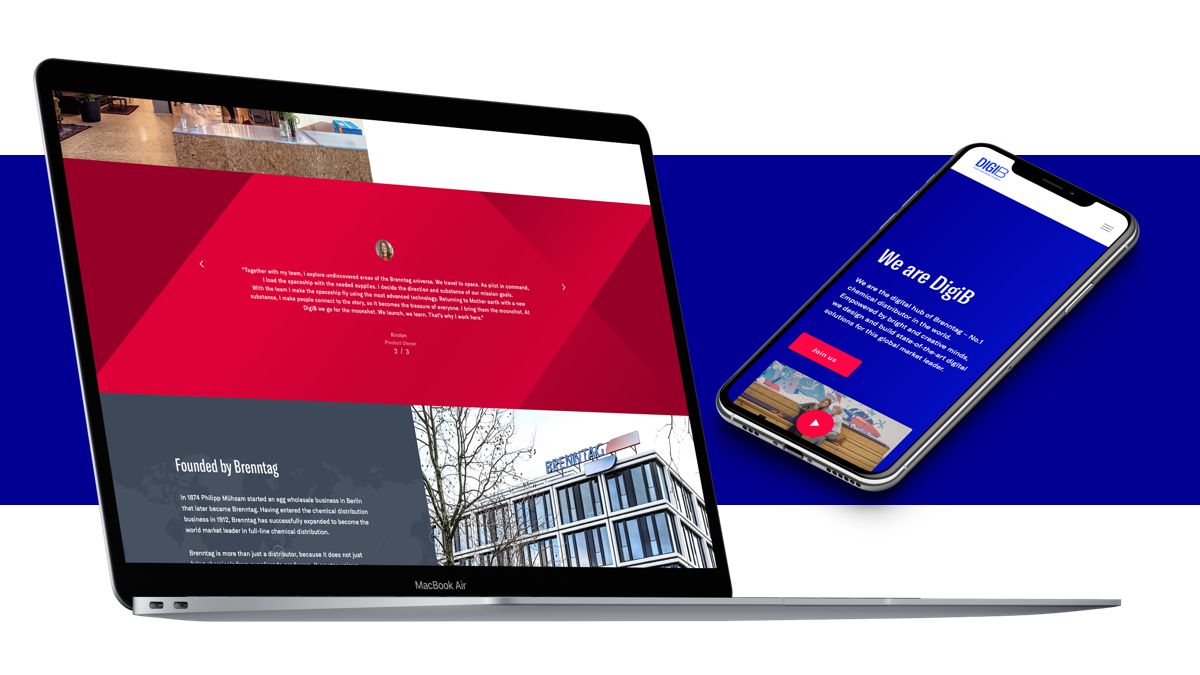
Supplying more information to upsell
When customers are returning to reorder from your company, there is an opportunity to upsell existing products and promote new ones. This goes beyond ‘customers who bought X also bought Y’. This form of personalisation should aim to suggest alterations and explain the reasoning, based on the specific customer’s order. Think of it as a digital representation of the sales rep relationship, understanding the developments in a customer’s business and reacting with new solutions.
It can also be developed into a website feature, an interactive problem solving flowchart or chatbot that allows visitors to input their problem or need and see what solutions the company would suggest.
Optimising site speed
Not every on-site personalisation improvement is interactive and clear for customers to see. Adding in predictive loading is one example, a feature that speeds up the load time for each page on your site based on similar customer journeys.
Customers may never realise that the site they visit uses predictive loading, but they will notice if a site is slow to load. Selling needs to be as smooth as possible; slow loading leads to a larger bounce rate. Installing features, like predictive loading, that uses the information gathered when analysing personalisation can ensure the process never stalls.
Off site-actions
Personalisation also applies to actions that the company makes off-site. Email is one area, automated workflows for customers that left the site without checking can bring them back, boosting conversion through reminders and specialised offers. This can similarly be used for surrounding purchases, following the frequency of repeat purchasing or the typical time it takes for a customer to branch out to a new product.
Also consider how the purchasing journey exists across different touchpoints such as apps, social media and face-to-face meetings. Is it easy to bring up the customer profile and optimise their order based on this information? This kind of integration creates a seamless experience, perfect for B2B’s longer, omnichannel purchasing journeys.
Facilitate an easier commerce experience
In each recommendation, the end goal of facilitating a faster, easier, more accurate commerce experience remains the number one priority. By hitting each aim, the business makes each customer more likely to checkout, more likely to return, and more likely to talk to people in their industry about how great purchasing from your business is. These improvements build up, a snowball effect that ultimately results in increased sales and larger, loyal customer base.
More Insights?
View all InsightsQuestions?
Managing Director UK
Brian Robinson
Ensure more people spend time with you
Today’s customer journey is complex, weaving in and out of digital touchpoints, physical stores, and retailers. Together, we can optimize and personalize these various touchpoints, creating customer experiences that drive awareness, growth, and loyalty for your brand.
Exceptional experiences at every touchpoint
We help you map your customers’ end-to-end journeys, uncovering the biggest opportunities to drive awareness, growth, and loyalty.

Personalization—even at scale
We specialize in using data, automation, and AI to bring personalized experiences to the masses.

Seamless tech stack
We partner with all the leading DXPs to help you integrate and leverage technology to create better experiences.

Never one-size-fits-all
Every customer journey is different. We can help you track, analyze, and optimize the paths your audience takes to convert.

AI-driven customer insights
With AI, we can gain contextual insights into customer behaviors, preferences, and feedback, before quickly putting them into action.

Where consulting meets craft
With deep and broad experience in UX/UI, emerging tech, creative, data, and AI, we can move the needle for your business while giving your customers something to love.
Get in touchBrands
we work with

DEPT® Talk: Creative Automation
In the fast-paced world of marketing, consumer expectations are rising. More than ever, they want personalised experiences and offers.
An ‘always on’ approach to marketing automation is critical to build relationships through a series of integrated, relevant, timely and personalised communications across multiple channels.
But in today’s digital reality, it’s incredibly difficult to deliver effective, multi-channel retention and loyalty programmes in a privacy-by-default world.

DEPT® Talk: Creative Automation
Enter, creative automation. The key to ensuring every piece of creative and communication builds and contributes to the broader strategic goals of your business, helping to establish and cement relationships with your customers at every stage of their journey.
Efficiency is table stakes. But creative automation improves speed, personalisation and value-driven campaigns (at scale) to help you reach audiences when it’s most impactful.
In this DEPT® Talk, we’ll uncover the power, and necessity, of creative automation in the new marketing landscape.
By the time the talk finishes, you’ll understand:
- What creative automation actually is, and what it’s not
- How creative automation solves the challenges of manual production
- What brands are innovating in the space
- Why you should be making the business case for adopting creative automation
Meet the speakers

Anneloes van Vugt
Head of Content at DEPT®
Anneloes, a digital professional with a background in both media and creativity, has honed her expertise over a distinguished 8-year career as a content strategist on the agency side. She is a masterful connector in the realms of performance-based and creative thinking, skillfully weaving the threads of innovation and strategy. At DEPT®, Anneloes is the visionary driving force behind the creative team, which is passionately dedicated to achieving growth through inventive solutions and artistic brilliance.

Florencia Obert
Head of Creative Automation at DEPT®
With over a decade in tech agencies, Florencia is a specialist in creative automation. Leading DEPT®’s global team as the Head of Creative Automation across Product, Delivery & MarTech, she is at the forefront of pushing the technical and creative boundaries of this field. Florencia has been instrumental in shaping DEPT®’s creative automation offering from the ground up, and is passionate about streamlining processes and solving problems with technology. She is obsessed with finding innovative solutions that let tech do the hard work.

Mitch van den Akker
Digital Designer at DEPT®
Bringing together design, marketing, and innovation, Mitch seamlessly merges design and innovative technology to enhance online campaigns efficiently, prioritising quality, creativity, and customisation. He has extensive experience in global campaigns, specialising in automation and driven by a profound passion for creative creation through concepting, designing, and developing.

DEPT® is heading to Shoptalk Europe
Shoptalk is where the future of retail is created. Thousands of retail innovators come together to discuss trends and the transformation of how consumers discover, shop and buy everything ranging from apparel and electronics to groceries.
Shoptalk Europe 2024
Find us at the MACH Meetup Lounge
DEPT® is teaming up with the MACH Alliance and welcomes you to swing by the MACH Alliance Meetup Lounge to meet the team.
Located in the far right of the exhibition hall by the entrance to the Meetup space, the Lounge will be open for you to chat and connect throughout the event.
We also invite you to kickstart your trip to Shoptalk with Welcome Drinks at Skyfall Cocktail Club on Sunday June 2 from 6:00pm – 8:00pm. Secure your ticket here.
On the ground
Meet us at Shoptalk Europe

Franziska Bönder
Head of New Business, DEPT®
Franziska is an expert in developing strategies that blend the best of creative, media, data and technology to deliver demonstrable growth for clients. Franziska has experience across a vast range of industries, working with brands such as Zalando, Douglas, ALDI, Samsung, smart and Netflix to help them stay ahead.

Jonathan Whiteside
Global SVP of Technology & Engineering, DEPT®
Jonathan has led tech teams for more than 20 years, working with global brands such as adidas, Nikon, Reckitt, and Diageo. Jonathan leads our engineering craft of over 1,750 engineers and is responsible for growing capabilities across content, commerce and cloud platforms, digital products and emerging technologies.

Tim de Kamper
VP eCommerce, DEPT®
As VP eCommerce at DEPT®, Tim focuses on designing and building seamless commerce experiences for global brands. He has experience across a wide range of industries, working with brands including GANT, Manchester City F.C.,Just Eat Takeaway and Nilfisk. Tim has over a decade’s experience leading developers and architects to deliver eCommerce experiences that brands need and customers want.
We can help your brand create seamless shopping experiences
Buyer behaviours are continually shifting. In a world where everything is shoppable, tech stacks stifle innovation, and personalisation needs to be a reality, brands need to be smarter and faster to stay ahead.
DEPT® works with brands across all industries to create flawless shopping experiences that fuel their business growth. Together, we create holistic customer journeys and world-class experiences, fueled by robust marketing strategies that embrace new behaviours, technology and data. We offer integrated capabilities across creative, media, AI and data, retail media, marketplaces, social, and emerging tech.
With over 20 years of experience across consumer packaged goods, fashion and lifestyle, retail, automotive, and B2B, we can help you grow your business and deliver a modern commerce journey.
We’d love to connect at Shoptalk Europe to learn more about your tech and marketing challenges and share our experience.

DEPT® Lunch Break: Creative Automation
In the fast-paced world of marketing, consumer expectations are rising. More than ever, they want personalised experiences and offers.
An ‘always on’ approach to marketing automation is critical to build relationships through a series of integrated, relevant, timely and personalised communications across multiple channels.
But in today’s digital reality, it’s incredibly difficult to deliver effective, multi-channel retention and loyalty programmes in a privacy-by-default world.

DEPT® Lunch Break: Creative Automation
Enter, creative automation. The key to ensuring every piece of creative and communication builds and contributes to the broader strategic goals of your business, helping to establish and cement relationships with your customers at every stage of their journey.
Efficiency is table stakes. But creative automation improves speed, personalisation and value-driven campaigns (at scale) to help you reach audiences when it’s most impactful.
In this DEPT® Lunch Break, we’ll uncover the power, and necessity, of creative automation in the new marketing landscape.
By the time your lunch break winds up, you’ll understand:
- What creative automation actually is, and what it’s not
- How creative automation solves the challenges of manual production
- What brands are innovating in the space
- Why you should be making the business case for adopting creative automation
Meet the speakers

Anneloes van Vugt
Head of Content at DEPT®
Anneloes, a digital professional with a background in both media and creativity, has honed her expertise over a distinguished 8-year career as a content strategist on the agency side. She is a masterful connector in the realms of performance-based and creative thinking, skillfully weaving the threads of innovation and strategy. At DEPT®, Anneloes is the visionary driving force behind the creative team, which is passionately dedicated to achieving growth through inventive solutions and artistic brilliance.

Florencia Obert
Head of Creative Automation at DEPT®
With over a decade in tech agencies, Florencia is a specialist in creative automation. Leading DEPT®’s global team as the Head of Creative Automation across Product, Delivery & MarTech, she is at the forefront of pushing the technical and creative boundaries of this field. Florencia has been instrumental in shaping DEPT®’s creative automation offering from the ground up, and is passionate about streamlining processes and solving problems with technology. She is obsessed with finding innovative solutions that let tech do the hard work.

Mitch van den Akker
Digital Designer at DEPT®
Bringing together design, marketing, and innovation, Mitch seamlessly merges design and innovative technology to enhance online campaigns efficiently, prioritising quality, creativity, and customisation. He has extensive experience in global campaigns, specialising in automation and driven by a profound passion for creative creation through concepting, designing, and developing.
Technology has been reshaping the future of the creative marketing and advertising industries even before the pandemic accelerated the need for new approaches. But now, as organisations plan their futures in a transformed world against the backdrop of economic turmoil, many are choosing to take the next leap forward and explore the opportunities presented by automation.
The pandemic upended the marketer’s playbook, challenging the existing rules about how to develop customer relationships and build a brand. In just a short time, we have seen the enormous potential of automation to drive brand engagement, boost creativity and improve customer engagement. The foundations have been laid to tackle the next challenge we all face: global economic uncertainty.
From its contribution to revenue to the productivity opportunities it can generate, automation can play a transformative role in every business journey. Applied intelligently, automation can realise the ambitions of marketing and creative leaders by delivering greater personalisation, conserving more time for human creativity, and unlocking new opportunities to grow and scale.
Creative automation combines creativity and technology to streamline production and augment the creative process so that the best ideas take shape faster. It enables the delivery of creative assets at scale, dynamic advertising, and conversational marketing, helping brands to supercharge their creative output through technology.
DEPT® has been pioneering creative automation for over ten years. Here, marketing leaders from Just Eat, eBay and Opendoor clients share what creative automation helps them to achieve.

Just Eat: global scale, local relationships
Matt Bushby, UK Marketing Director at Just Eat
“Automation enables companies to use critical information to target key audiences at scale with the right messages. This is particularly valuable for a global business like Just Eat whose relationship with its customers and partners is a local one.
“Working with DEPT®, we have used tools such as YouTube Director Mix to create more localised experiences for our customers. Our partnership has enabled us to deliver to a mass audience but also focus on the areas where we need to drive success. And that’s incredibly exciting because it means we’re able to engage more customers in more relevant ways and tell them about the incredible choice on the app.
“Automation also enables us to produce assets at scale. Whether it is through our CRM workstreams or our external channels, automation helps us to discover new ways to drive efficiency and produce large volumes of advertising assets that increase our reach. From email and push notifications to social media advertising and video platforms, automation has empowered us to create at scale and optimise our creative output to deliver the best results for our customers.
“The introduction of automation has enabled our teams to focus on higher level tasks and the big challenges, such as how we strategically build our business, come up with new creative ideas and identify smarter ways to engage our customers. With automation we can test multiple ads across thousands of creatives – a process that could take people days, weeks or even months to deliver. By using automation, we can not only get quicker results but free up our teams to use their creativity in more productive ways.”
eBay: loyalty & engagement
Eve Williams, Chief Marketing Officer, eBay
“At eBay, we use automation across multiple points of the customer journey. From the ads on our website to the emails we send our customers, automation enables us to not only personalise our messages based on our customers’ browsing histories and purchases but also share other promotions they might be interested in. Ultimately, automation has enabled us to better engage with our customers and justify their loyalty to us by creating marketing assets that they find interesting, engaging and relevant.
“Automation can also have a positive impact on people in the workplace too. Machine learning has the potential to reduce the number of repetitive manual tasks that employees have to do and gives them more freedom to think creatively in their roles. For example, instead of manually uploading hundreds of differently sized versions of a single asset, we can automate the resizing process and designers can produce more assets that are more relevant to our customers.
“Throughout our automation journey, DEPT® has been an important partner for us. Their experience in understanding the full end-to-end customer journey has helped us to automate and personalise a wide range of campaigns, from emails to product pages. Their combination of technical understanding and their ability to create content has been powerful because it has enabled us to automate processes and seamlessly create content at the same time.”
Opendoor: driving the best outcomes
Marty Ellis, Head of Lifecycle Marketing, Opendoor
“This type of automation offers two primary benefits. Its ability to generate lots of assets enables businesses to do rapid testing at a scale that was previously impossible. This improves engagement and, ultimately, conversion rates.
“The second benefit we see is the potential for creative asset automation and artificial intelligence to work together to apply intelligent feedback to the marketing process. AI and automation together can assemble the jigsaw puzzle of a creative asset, deciding on the best copy, imagery and layout based on the variations that drive the best outcomes for a given customer. In this way, companies can create personalised campaigns that are incredibly effective at scale. In the future, the most intelligent software will be able to learn what works and design and deploy campaigns with minimal human input.”
Delivering transformational growth
At DEPT®, we believe in the power of automation and its potential to propel organisations into a faster, better and more productive future. We are committed to creative automation because we have seen what it can achieve for our clients. From delivering personalised content at scale to giving us back more time to develop creative strategies, we know that automation technology can deliver truly transformational growth for both our business and our clients, especially in times of uncertainty.
Drop us a line today to discuss how creative automation can supercharge your business.
More Insights?
Discover moreQuestions?
From Sydney to San Francisco, DEPT® partners with eBay to conceive, create, and deliver transformational digital campaigns at scale. Throughout eBay’s extensive online presence in Europe, North America, and Australia, we work across every digital touchpoint.
Our bespoke automation technology means that eBay can keep up with the ever-changing retail marketplace landscape, engaging customers onsite, through CRM, and on social channels at rapid speeds.
Engaging audiences worldwide
With over 170 million global customers daily, eBay needed an agency that could keep the conversation going 24/7 in seven different languages. They tasked us with creating a leading customer experience, executing ideas, concepts and designs that would engage their audiences worldwide. eBay wanted campaigns that were consistently relevant to each of their users, from seasoned sellers, to new buyers, to lapsed customers. And, they wanted to connect on an emotional level across multiple channels.
Not all customers are the same
In order to take eBay’s comprehensive conversation to the next level, we gained a deep understanding of the different customer journey paths that their platform provides. Through communications that speak directly to specific customer types like regular buyers, sporadic sellers, passionate collectors, or alternate makers, eBay could forge an intimate connection with each of them.
This meant they needed to generate personalised content and relevant experiences with their customer segments in mind, approaching them with seamless, responsive communication to drive revenue, retention, and brand loyalty.
Hyper-personalised content
Our DEPT®/Creative Automation tools allow us to create multiple cross-channel communications to various eBay audiences. At the click of a button, we can generate thousands of creative variations from just a few inputs. Automated asset production allows us to tailor messaging to each individual customer segment, and iterate on the messaging quickly based on performance data. Our tools make it easy to adjust copy and design, so that we are always producing hyper-personalised content that truly resonates with eBay customers around the world and at every stage of the user journey.
Hundreds of campaigns monthly
By streamlining the creative process with technology, we create over 200 monthly campaigns in multiple languages for eBay. We are able to convey their unique brand voice and articulate their values consistently to millions across global regions. Through personalisation at scale, we talk to the specific needs of every customer and build meaningful relationships between eBay and their users that drive significant engagement and amplify conversion. Our approach ensures that eBay remains a household name that informs, inspires, and moves at the speed of retail.
Questions?
VP of Clients
Adam Jewson
Discover more

DEPT® × Adobe
Leveraging content, personalization, and AI at scale
Want to learn more about content automation at scale, personalization, and AI?
Join us on Wednesday, May 1st, to hear from our Adobe experts and guest speaker from smart Europe GmbH, Praveen Sadhineni. They’ll discuss the biggest challenges brands face and how we’re solving them with the Adobe suite.
APAC: 11:30 IST / 14:00 SGT / 16:00 AET
US/EMEA: 11:00 ET / 16:00 BST / 17:00 CEST
Save your spot!

DEPT® x Adobe Leveraging content, personalization, and AI at scale
Meet the speakers

Yash Mody
CTO, DEPT® Adobe Practice
Passionate CTO specializing in Adobe Experience Cloud at DEPT®, driving innovation and success through expert Development, Deployment, Architecture, Integration, Audit, and Sizing of cutting-edge solutions like AEM, AEP, Workfront, ALM, and other products.Crafting seamless APIs that empower MarTech teams to take control effortlessly. APIs built with the utmost security, using a pragmatic rest approach and an outside-in perspective, ensuring minimal deployment when changes are made. Leveraging SHAFT (Tekno Point’s API Management solution), we create robust APIs that pave the way for streamlined operations. Proud Chief Architect of SHAFT, a near-no-code API management platform trusted by numerous enterprises. With SHAFT, businesses can optimize their API management processes and unlock unparalleled efficiency.Defining captivating e-commerce journeys for significant enterprises, enabling them to thrive in the digital landscape and provide exceptional customer experiences.

Oleg Sidorenko
Senior Adobe Solutions Consultant
Oleg is a seasoned digital experience architect, consultant and marketing technologist focusing on Adobe solutions. His expertise spans content and asset management, commerce, customer lifecycle marketing, data management and activation, analytics and personalisation. After working as a creative software consultant at Adobe in the early 2010s, he graduated to the agency world of digital marketing and experience management with clients in consumer electronics, automotive and racing, retail, insurance and banking.
With 25+ years of experience in most project roles and 15 expert certifications by Adobe across Experience Cloud, Creative Cloud and Document Cloud under his belt, Oleg blends extensive technology expertise with a deep understanding of business drivers, challenges and digital strategy. Oleg speaks the same language with CEOs and CMOs as well as with designers and developers, making sure that DEPT’s solutions for Adobe clients reach their business goals and are future-proof and optimised for performance and user productivity.

Praveen Sadhineni
smart Europe GmbH
As a Lead – CX CoE at smart Europe GmbH, Praveen’s main responsibilities are to provide expert advice in customer experience & customer journey to the business, and optimal usage of Adobe experience cloud technology.
Praveen also manages strategic partnership engagement with Adobe and Business partners.
Praveen lives with his young family located towards North of Munich, Germany, which provides a great opportunity to be close to nature, meadows & lakes and also enjoy traditional Bavarian culture.
We help brands leverage Adobe
As a global digital agency and Platinum Adobe Partner, we have a track record of helping brands leverage Adobe. Our 500+ Adobe team comprises designers, developers, marketers, and analysts who are passionate about the platform and what it can do for digital businesses.
We can help you maximize your investments in Adobe solutions and strategize, scale, and personalize experiences. And with broad expertise in AI, we can help you shape and ship innovative AI strategies.
We’d love to see you on the other side of the screen! Register to join.
Spatial computing, expected to reach a market size of over $700 billion by 2033, integrates AI, computer vision, AR, and VR to merge virtual experiences with the physical world. Many believe that it has the potential to impact the world in the same way smartphones did in the early 2000s.
With spatial computing, your surroundings become interactive canvases, where every gesture and glance shape your digital interaction. It promises to revolutionize customer engagement, offering immersive experiences tailored to individuals.
But what does this mean for your industry?
With a diverse and global team of over 4,000 digital experts at DEPT®, we have many perspectives on the potential impact of spatial computing and how it will extend across industries like fashion, music, retail, health, and education.
Read on for some hot takes from experts on how they see the future of spatial computing.
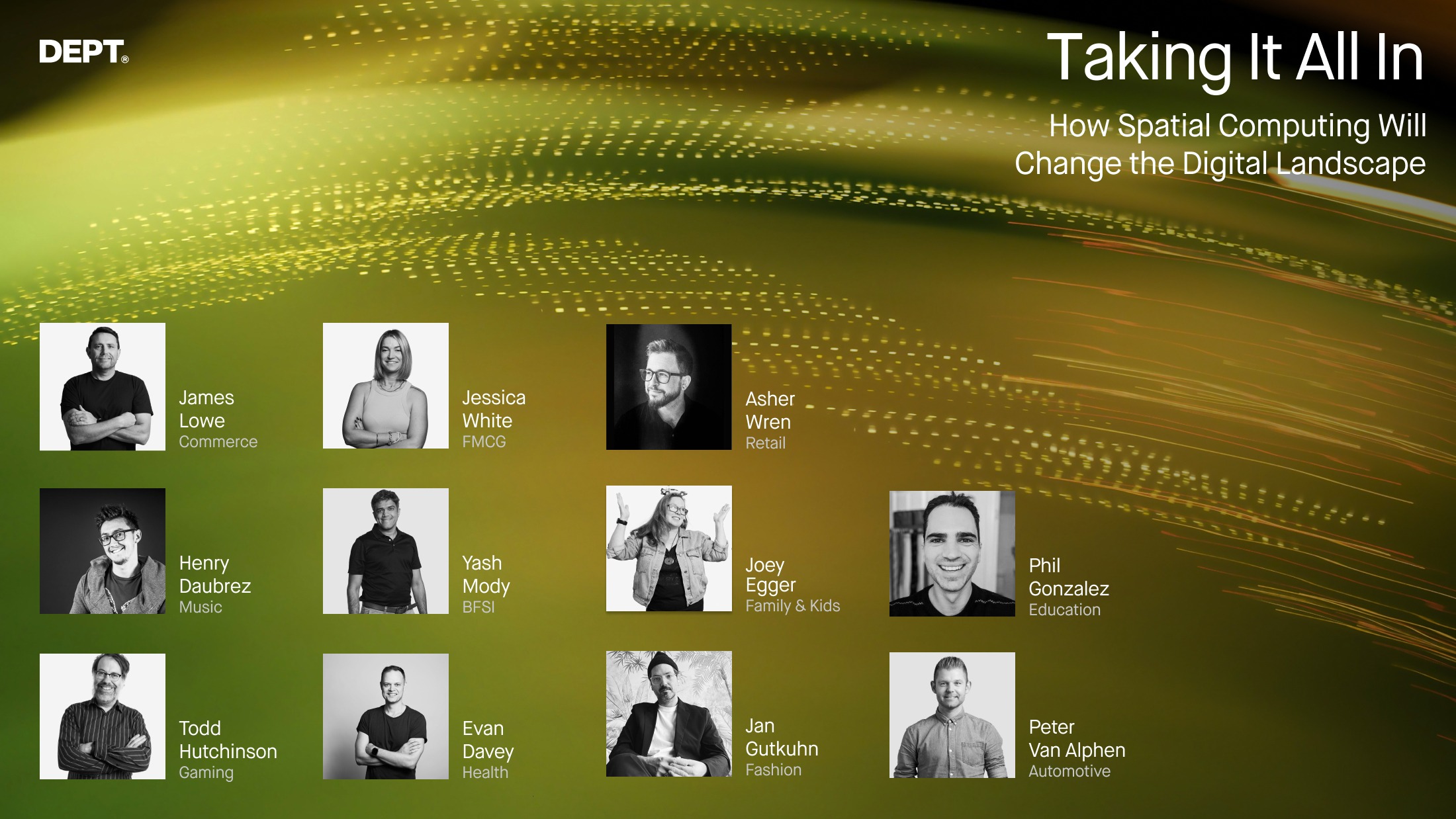

Commerce
James Lowe – VP Commerce APAC
The goal of an e-commerce website is, ideally, to sell products, and they do that by simulating real life shopping experiences online. We add products to a virtual ‘cart’ and virtually visit the ‘checkout.’ The reality is, though, that there is still a huge gap between real-world touch and feel experiences talking to a salesperson and online shopping. This is changing.
From immersive experiences, viewing a rug in your room or a hologram of yourself sized with those new jeans, the effect of spatial computing in reshaping the e-commerce experience will be massive. It’s not only about being able to try out that rug in your living room but how that will affect light and sound, changing your experience of your own home forever.
Spatial computing, whether AR, VR, or any reality that edges us closer to replicating real-world shopping and in-store personalization, will change how we shop forever. We have only scratched the service.
The targeted use of these technologies will be important. Successful brands will use spatial computing subtly (not everyone has an Apple Vision Pro!) and AI passively to bring users on the journey where required and blow our minds at other touch points in the mixed reality commerce journeys of the future.
This is a moment for commerce brands to set themselves apart in a field wide open with opportunity. Brands that continue creating immersive, personalized shopping experiences, replicating and augmenting real word experiences as the technology evolves, will emerge as leaders.
Best encounter with spatial computing so far?
I bought a trampoline for the kids for Christmas this year. The AR feature on the site allowed me to video my front yard in real-time, position the trampoline in the yard, and walk around it, seeing the placement from different angles. I was surprised at how accurate it was. I got my tape measure out to verify (didn’t trust the tech!), and the virtual placement was spot on.
This was a super helpful application of AR enhancing my buying experience. I had limited space in my yard, so this augmented view of my yard sold it for me. AR placing products in situ is not the most cutting-edge example of spatial computing, but it was the best example I have personally experienced and led me to the checkout.

FMGC
Jessica White – General Manager Creative & Content Australia
I’ve been a storyteller my entire life. Sitting around the table with my family, we took turns to see who could tell the best story. I love the creativity of it, the challenge of finding the right hook, and helping brands become famous. Famous in the category, internally, and most importantly, famous with consumers, making their product the one they reach for first.
Fast forward 10 years, storytelling is more diverse than ever, with TikTok as a platform for entertainment, self-expression, and search! Personalisation gives tailored brand experiences across email, social channels, and online shopping. Technology is making it easier and easier to reach consumers and tell them richer stories. Spatial Computing is enabling us to seamlessly merge the physical world with the magical world of digital. Picture consumers virtually learning how to brush their teeth properly or wash their hands effectively in their own spaces, testing, learning, and experiencing them firsthand.
The digital world as we know it has changed forever. Things are only going to get more exciting from here. We’re taking storytelling to a new dimension, and I’m here for it!
Best encounter with spatial computing so far?
From virtually trying on beauty products to unlocking a world of interactive content and promotions, spatial computing empowers marketers with the tools to weave captivating stories. Consider the experience of trying on different makeup looks in augmented reality or seamlessly accessing additional information and promotions while browsing in-store. One may be more functional than the other, but both avenues create a richer storyline for consumers to explore, transforming mere transactions into memorable experiences.

Retail
Asher Wren – VP Growth Americas
Spatial computing will change the game in commerce in several ways— from behind-the-scenes operations and logistics like inventory and supply chain management and helping warehouse staff to locate items more efficiently through to creating more immersive, contextually relevant customer experiences at-home or in-store.
Industries that typically rely on more tactile, white-glove customer journeys— e.g., luxury fashion, auto, home furnishings, etc. will see a completely revolutionized retail experience. Shopping experiences in those industries are increasingly digital. Still, nothing compares to being able to feel the finish on an Eames chair, feel the weight of a Rolex in your hand, or see the movement of a Gucci garment.
Spatial computing will put customers on their catwalks in this season’s must-have, in the driver’s seat of a luxury car, or in a newly decorated and kitted-out home. It’s the next step in bringing elevated shopping experiences for high-ticket items into the home, changing retail forever.
Best encounter with spatial computing so far?
I’m a big fan of using augmented reality to make static artwork come to life. It’s an oldie but a goodie— There’s something very punk rock DIY about the MoMAR concept— a group of artists leveraging augmented reality to overlay digital art onto traditional works of art in galleries.
The concept challenges the notion of what art is and pokes fun at the elitism of the fine art world. On the other end of the spectrum, for businesses, using AR to bring billboards to life can create engaging, buzz-worthy brand activations while also making existing OOH media buys work harder by establishing measurable paths to purchase from static billboards to digital/e-commerce.

Music
Henry Daubrez – CEO & COO Dogstudio/DEPT®
Past the expected entertainment outcome from a device like the Apple Vision Pro, there’s a huge potential for learning new skills.
I used to (badly) play the guitar as a teenager, by myself, at home, and I do remember printing sheet after sheet of chords and going through the painful journey of constantly moving from the sheets to the fretboard. I mean, nothing crazy, but it was still getting in the way of me learning a new skill.
Now, looking at the future of spatial computing and offering information contextually, there’s a future in which learning music can be offered directly in relation to the instrument, showing you the chords next to the fretboard or the notes on top of the piano keys. Even better, leveraging AI, there’s a very short path to suggesting the next note and giving you the fundamentals of improvisation.
This is one simple example but music, being attached to a different of our senses, has the potential to be experienced differently thanks to the evolution of headset technologies.
We’re still early despite the dozens of years separating us from the initial generations of headsets and the most recent ones.
Technology is finally getting to where we can experience the full expected potential: a seamless, integrated, contextual experience intertwined with reality. The Apple Vision Pro and the recent Quest3 are one iteration closer to that dream but not fully there yet.
I’m looking forward to the possibilities of experiencing and learning music (and a lot of other things) in a visual, natural, and neck pain-free manner.
Best encounter with spatial computing so far?
As mentioned, all the passthrough (and therefore avoiding pure VR) experiences around the learning of new skills are fascinating to me, whether it’s about cooking, learning an instrument (check PianoVision), or learning a trade. People directly think about gaming when looking at these devices, but the untapped education market is endless.

BFSI
Yash Moody – CTO APAC
Spatial computing presents an unparalleled opportunity to improve financial literacy worldwide by making complex concepts more accessible and engaging across diverse age groups and demographics. By leveraging immersive technologies, financial education can become more interactive, intuitive, and inclusive, empowering individuals to make informed financial decisions and participate more effectively in the global economy.
The convergence of fintech innovators and traditional financial institutions facilitated by spatial computing can lead to the development of groundbreaking products and methodologies prioritizing human-centric design and user experience. This collaboration can drive innovation and efficiency while addressing the evolving needs of consumers in the digital age.
Best encounter with spatial computing so far?
Several financial organizations have explored virtual branches using VR to make banking more accessible and inclusive. This makes banking more cost-efficient, secure, accessible, and personalized.

Family & Kids
Joey Eggar – Executive Director Games & Emerging Tech
When it comes to tech and kids, at the end of the day, it’s not so much about the technology, it’s about the experience.
For kids, it’s about what’s fun, intuitive, and engaging: What can tell a good story. What can provide a cool challenge? And for their caregivers – is my child safe using this device and playing this experience?
It’s our job to create spatial interactive experiences that feel natural to that device and are intuitive and safe for the user to play. We want the experience to work for the end user, not just for the device.
We’ve been working on variations of Spatial technology since 2012, kicking off with the award-winning The Hidden Park, which used a form of AR before AR was formally integrated into phones. Since then, we’ve crafted many projects utilizing AR with well-known kids’ brands such as The Wiggles and Sesame Street, VR to help kids reduce stress and anxiety during needle procedures with the Webby Award-winning SmileyScope, and with XR currently having fun with some projects that blend Mixed Reality headsets with real-world experiences.
With all our spatial work, we know that the tech is just a tool, and it’s the enriching experiences it facilitates that truly matter.
Best encounter with spatial computing so far?
It’s very simple, but the XR devices such as APV, Hololens, MetaQuest, and MagicLeap, when you initially map the environment around you. They all do it differently, but I never get bored of it, and it makes me feel like I’m on a Star Trek holodeck.

Education
Phil Gonzalez – Director of Engineering
Spatial computing, along with mixed and augmented reality technology, has the potential to redefine the educational paradigm.
If we were to bring a time traveler 200 years from the past to the present, 99% of our world would look vastly different to them: a classroom, however, would look mostly the same: a set of desks facing a presenter at the front of a room. While online, self-paced, and digital learning has started to take form in the last couple of decades, it still isn’t a stand-in for the in-person experience. You don’t have to look further than standardized test scores dropping dramatically during the COVID-19 lockdowns for evidence of this.
However, this is fortunately on the path towards change. VR/MR headsets allow learners to step into nearly any subject matter virtually. Want to learn about the human body? Shrink yourself down to the size of an organelle and explore it yourself! Perform lab observations in VR and later generate reports about those observations on a traditional computer. Studying WWI? Step into the moment of Archduke Franz Ferdinand’s assassination and political turmoil and speak with virtualized eyewitnesses.
MR/VR also enables a sense of presence missing from virtual learning experiences. With an online can an instructor know if students are engaged and understanding the material or disengaged and lost? Live video calls can sometimes help, but monitoring the facial expressions of 20+ students over Zoom doesn’t always work. Newly developed VR technologies enable eye tracking and facial gesture mapping that allow virtual avatars to appear confused, lost, or engaged and learning.
Best encounter with spatial computing so far?
Arizona State University’s DreamScape Learn. I had the pleasure last year of demoing some of the courses they offer and was blown away by the level of interactivity.

Gaming
Todd Hutchinson – Creative Director
Virtual Reality has never managed to live up to the promise of Ready Player One. Although it’s not surprising, only a select few are happy to block out their reality in favor of a digital one, and then there’s the motion sickness… blargh.
But spatial computing is a very different and vomit-free beast. It offers a brave new future, where real and digital worlds collide to make both cutting-edge and simple intuitive experiences.
Once the hardware reaches the point of looking like ordinary glasses, I can imagine everyone wearing them to engage in daily digital activities. From a gaming perspective, there are countless opportunities to integrate gameplay with the world around. Hide behind the couch to avoid enemy fire in an FPS, solve escape room experiences in your bedroom, or create and manage complex cities in your lounge.
The future seems bright, I gotta wear [spatial computing] shades.
Best encounter with spatial computing so far?
First Encounters. It’s a very simple and fun game in which players blast away at fuzzy little aliens to capture as many as they can before time runs out. The cool integration of Spatial Computing is that it starts off in the player’s room, and as they fire their blasters, they blow holes in their walls to reveal an alien world beyond. The aliens move from their alien world into the player’s room, and the player has to walk around to find hidden aliens. By the time the round is up, the walls are destroyed, and the player is now in the alien world.

Health
Evan Davey – VP Growth APAC
In healthcare, spatial computing isn’t just about enhancing patient experiences; it’s about revolutionizing care delivery. Imagine surgeons seamlessly accessing patient data in real-time during procedures or medical professionals conducting virtual simulations to refine treatment plans.
Spatial computing empowers us to bridge geographical gaps, providing remote consultations and monitoring for patients in rural areas. However, it’s not without its challenges—ensuring data security and privacy remains paramount.
Yet, the potential to improve outcomes and streamline processes is undeniable. As we navigate this transformative landscape, collaboration between healthcare providers, technologists, and policymakers will be crucial in realizing the full benefits of spatial computing for the industry.
Best encounter with spatial computing so far?
I’m absolutely taken by the breadth of use cases for the Apple Vision Pro, so it’s hard to nail it down to just one example. One experience I’m particularly looking forward to being an Australian – and air travel out of the country taking at least 8 hours – is taking an Apple Vision Pro onto the plane, watching movies in what will feel like a theatre rather than a cramped economy seat and working in that same seat on a projected 4K screen, rather than bending over my iPad. Add to that the privacy that comes with the APV, and I’m pumped to get onto that plane!

Fashion
Jan Gutkuhn – Director Web3
Spatial Computing was invented for the fashion industry. In the world of fashion, the allure of the runway is undeniable. Yet, the digital representation is full of limitations and disappointments. Spatial computing offers a lifeline, bridging the gap between the real and the virtual. It’s a designer’s dream becoming reality, setting the industry free.
The biggest opportunity lies in creating more human and emotional experiences through 3D – directly from the creative director’s imagination. No proxy, no samples, no shootings. Fully immersive experiences evoke a sense of wonder and delight – something missing in the realm of the 2D screens and CR-optimized online shops of today.
Imagine entering an immersive, highly emotional brand universe, seeing yourself in the latest runway looks, and chatting with a virtual stylist who understands your unique tastes and preferences based on your body measurements. Or attending a virtual fashion show where you can interact with models and designers in real time. For as long as you want – and you will want to stay and get lost, and shop…
These are the experiences that bring fashion to life in ways that were previously unimaginable. It allows brands to democratize the front row, inviting anyone and everyone to immerse themselves into the brand’s universe like never before.
This is it. Unlimited creativity and pure emotion. Directly from the designer’s brain into your Apple Vision Pro.
Best encounter with spatial computing so far?
Our work with H&M on creating their virtual showroom. 69% of the respondents said that the showroom had piqued their interest in a virtual H&M brand experience.

Automotive
Peter Van Alphen – Strategy Director Growth Europe
The world of mobility is rapidly changing from physical environments to digital experiences. Legacy manufacturers and emerging industry players are reinventing and rethinking the traditional paradigms. Electric vehicles, digital-first buying models, technology-led information systems, and self-driving solutions are leading the way in society and will become the standard.
In the realm of automotive, spatial computing is reshaping the driving experience, both within and beyond the vehicle’s interior. Innovations such as Augmented Reality Dashboards, Advanced Driver Assistance Systems, Predictive Maintenance, and Smart Parking Solutions exemplify the dynamic changes transforming the automotive industry. I am particularly excited about the potential of spatial computing to address traffic congestion and enhance driving safety.
At DEPT®, we’re at the forefront of innovation in the automotive landscape. We’re strategically positioned to provide comprehensive end-to-end customer experiences, leveraging the power of AI, technology, creativity, and media.
Best encounter with spatial computing so far?
I am deeply impressed by the spatial computing solutions that Tesla is developing and integrating into their vehicles. From the adaptive cruise control feature to the sophisticated infotainment systems and the advanced navigation system capable of recognizing environmental surroundings, Tesla is enhancing driving safety and security significantly. I eagerly anticipate the innovations and advancements that lie ahead.
Fostering creativity and curiosity
Spatial computing has the power to revolutionize how we interact with technology, reshape industries, and redefine user engagement. It’s a call to action for businesses to embrace this technology as a catalyst for innovation and growth.
However, realizing this potential requires overcoming challenges such as data security, logistical integration, and ensuring equitable access. Despite these hurdles, the consensus is clear: The future of spatial computing is limitless, and it’s up to businesses to seize the moment and shape the digital landscape of tomorrow.
With a deep understanding of emerging technologies and a track record of delivering cutting-edge digital solutions, our teams at DEPT® are uniquely positioned to guide businesses through the complexities of spatial computing integration.
Creativity x AI: An interview series exploring the near future
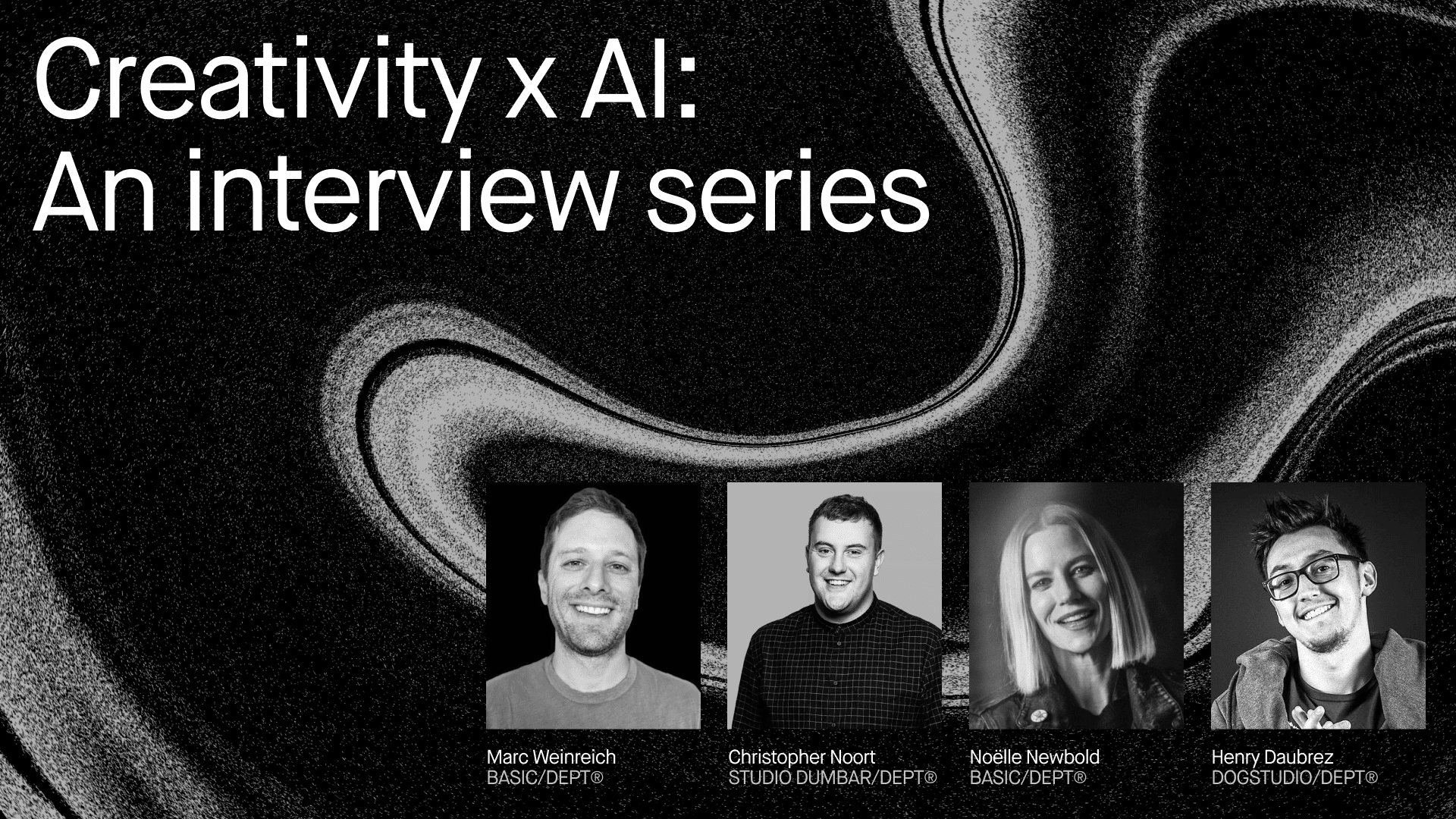
Insights
View all insights
A content management system (CMS) is the foundation for creating, managing, and delivering digital content. However, traditional monolithic CMSs, while effective, often pose challenges with scalability, flexibility, and adaptation to different platforms and devices.
Unlike its monolithic counterpart, a headless CMS separates the aspects of content management and delivery. Simply put, it separates the backend content creation and storage (the “head”) from the frontend presentation layer (the “body”).
This separation allows you to distribute content more efficiently across multiple channels, platforms, and devices. And this contributes to a smoother and easier process of your organisation’s continued global expansion.
Why? Because expanding your business globally requires the ability to adapt and customise content for different markets, languages, and cultural contexts. It’s a multifaceted challenge that requires seamless content management and dynamic delivery to ensure a consistent and engaging user experience across the globe.
This is where a headless CMS comes into play.
The multilingual imperative
A vital component of global expansion is serving multilingual audiences. Different regions may have unique requirements and preferences. A headless CMS allows you to customise the content delivery and user experience for each market without changing the core content structure.
For example, a retailer looking to expand into new markets can easily manage product descriptions, blog posts, and promotional content in different languages.
It can also adapt content to the preferences and sensitivities of each target audience, whether it’s adjusting images, toning down certain cultural references, or aligning content with local holidays and events.
Multi-channel coverage
A headless CMS frees your content from the constraints of a monolithic architecture. This freedom allows you to deliver consistent content to your audience across various platforms, each with its unique requirements. Whether it’s a news article, product update, customer testimonial, or advertising campaign, your content can be easily adapted and distributed to fit the specifics of each channel.
Imagine this scenario: Your global expansion strategy involves launching a new product line. To create excitement and effectively engage your audience, you must spread the word about this new product across multiple channels. With a headless CMS, you can create customised versions of content optimised for specific platforms.
This means a visually rich and concise announcement for a mobile app, a social media post that can be shared with other users, a detailed product page on your website, and even voice-optimised content for smart speakers and assistants controlled by AI.
The benefit of omnichannel is meeting customers where they are most comfortable. A headless CMS allows you to reach a global audience through their favorite channels and devices, providing a seamless and consistent user experience at every touchpoint.
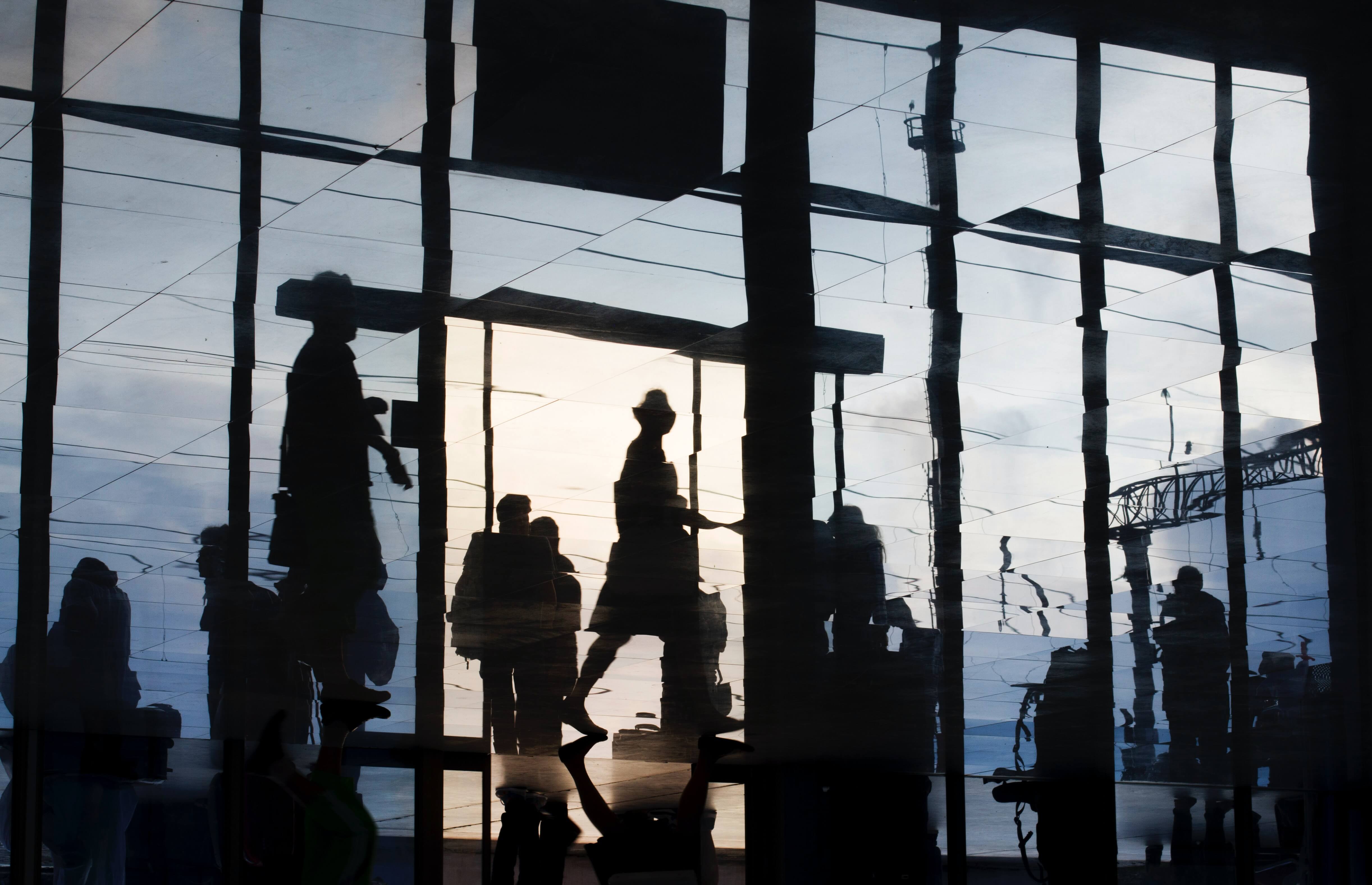
Scalability and global collaboration
As your business embarks on a global expansion journey, the demand for your digital presence will inevitably increase. That’s where the scalability of a headless CMS becomes particularly important. Whether you’re dealing with increased content demands, sudden spikes in traffic, the introduction of additional languages, or expansion into new regions, it has your back.
Imagine launching a new product line on another continent or participating in a major international marketing campaign. Your website traffic is skyrocketing, and users from different regions are eager to get content in their native language. With a headless CMS, you don’t need to fear such scenarios.
The system is designed to adapt to such growth without the need to rebuild your digital infrastructure. It’s easily scalable, ensuring that your content remains accessible, responsive, and engaging no matter how global your operations go.
Global expansion also involves collaboration between teams in different countries. With a headless CMS, multiple teams can seamlessly work on content simultaneously, regardless of their geographic location.
Whether you need your marketing team in New York to coordinate with developers in London or designers in Shanghai, a headless CMS facilitates real-time collaboration.
Content performance analysis
Many headless CMS platforms provide analytics and data-driven insights into how content performs in different regions. This information can help you make informed decisions about content optimisation and localisation strategies, ensuring your global expansion efforts are data-driven and effective.
This goes beyond just collecting data. It empowers you to continuously improve your content strategies with:
Content personalisation
Data-driven insights can help you personalise content for different regions and audience segments. By understanding what content works best for specific customer groups, you can provide more relevant and engaging experiences, increasing user satisfaction and loyalty.
A/B testing
A headless CMS often supports A/B testing, which allows you to experiment with different content variants in certain regions. This approach helps you determine which content options work best and refine your strategies accordingly.
ROI evaluation
By understanding how content impacts your KPIs, you can measure the ROI of your content marketing efforts in each market. This information is invaluable for efficiently allocating resources and optimising your content strategy.

Global compliance
International expansion often involves compliance with various regulatory requirements (such as GDPR in Europe). A headless CMS can help you manage the content and data processing associated with regulatory compliance, reducing the risk of legal issues as you expand into different markets.
Some regions require certain data types, such as customer information, to be stored within the country. The ability of a headless CMS to distribute content and data across different servers allows you to meet these localisation requirements without compromising the user experience.
Regulations may also require explicit consent from users to process data. A headless CMS can integrate consent management functions, ensuring that user permissions are clearly documented and adhered to in accordance with legal requirements.
Headless CMS offers many benefits, but one of the most significant is its future-proofing. As new devices and platforms emerge, a headless CMS can quickly adapt to the changing landscape.
In fact, the promise of a headless CMS goes beyond mere technology. It protects your content strategy by ensuring your organisation remains agile, responsive, and ready to take advantage of new opportunities. It’s a strategic investment in the longevity and resilience of your global digital presence.

